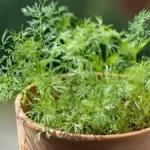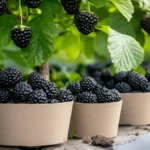The Crassula plant, sometimes referred to as the Money Tree or Jade Plant, is a valuable addition to any house because of its many health advantages in addition to its pleasing appearance.
The Health Benefits of Crassula:
- This plants improve indoor air quality by eliminating pollutants such as formaldehyde, acetone, benzene, and toluene. Because these substances can aggravate health conditions including allergies, asthma, weakness, and insomnia, the it is a great addition to a healthy living space.
- Keeping this plants nearby can help reduce stress and increase mental health. The presence of vegetation indoors is associated with creating a calmer and more tranquil atmosphere.
- Traditionally, jade plant extracts were used to heal wounds, skin warts, and diabetes. Its leaves are sometimes included in teas to heal digestive problems and other illnesses.
Environmental and Social Advantages of Crassula:
- These plants use crassulacean acid metabolism to absorb CO2 at night, making them especially useful for maintaining healthy air quality in bedrooms.
- This plant can help maintain humidity levels in dry conditions, which can help lessen problems like colds, itchy throats, and dry skin.
Gardening Has Aesthetic Benefits:
- These low-maintenance plants may grow in both sunny and shady settings and only need occasional watering. They are therefore perfect for beginning gardeners.
- According to Feng Shui, Crassula plants are lucky and positive. They look good and are small enough to fit in with a variety of interior decor styles.
Growing and Care Guidelines:
- This plants may withstand some shade, but they prefer full sun. they should shield against bitterly cold weather.
- When the soil is dry, give the plants sporadic watering. Rotten roots might result from overwatering.

- Prune the plants after they bloom or when they lose their desirable shape. This keeps them looking and feeling good.
Distribution:
- You can cultivate crassula from seeds; usually do this in the spring or summer. Planting the seeds requires wet, well-drained soil.
Typical Problems:
- Stress from submersion can cause a plant’s leaves to drop. Underwatering makes the leaves get shriveled or soft.
Pruning:
Whenever any type of crassula becomes straggly or leggy, its growth might be reduced by around one-third. Every clipped branch should have a minimum of a few leaves. If it blooms (which it seldom does when planted inside), you should cut it back soon.
Common Pests:
Most this plants deal with aphids, spider mites, mealybugs, and other common pests, primarily when cultivated indoors. However, specific pests and diseases may vary.3. The easiest way to address these problems is to use non-chemical remedies, such as neem oil or other horticultural oils.
Conclusion:
In the realm of mental health, crassula plants become catalysts for positive emotions. Their presence reduces stress and enhances mood, fostering a sense of calm amidst the chaos of modern life. As we nurture these plants, we find ourselves nurturing our mental well-being.
A frequently asked question:
Q1: What kind of light does Crassula Ovata require?
A1: Bright Indirect sunlight is ideal for Crassula ovata. It will benefit from plenty of filtered light if you place it close to a window.
Q2: What are the ideal growing conditions for Crassula arborescens?
A1: The ideal conditions for Crassula arborescens include well-draining soil, a mixture of perlite, bright indirect light, and temperatures between 65 and 75°F (18 and 24°C). Use minimal water, letting the soil dry up in between applications.
Q3: What type of soil is best for Crassula succulents?
A2: For your Crassula succulent, use a well-draining succulent or cactus mix with extra perlite to provide adequate aeration and avoid soggy roots.
Q4: Can I keep my crassula plant indoors?
A4: Yes, you can keep these plants indoors. Ensure they receive plenty of bright, indirect sunlight and provide adequate ventilation to prevent issues with humidity.



